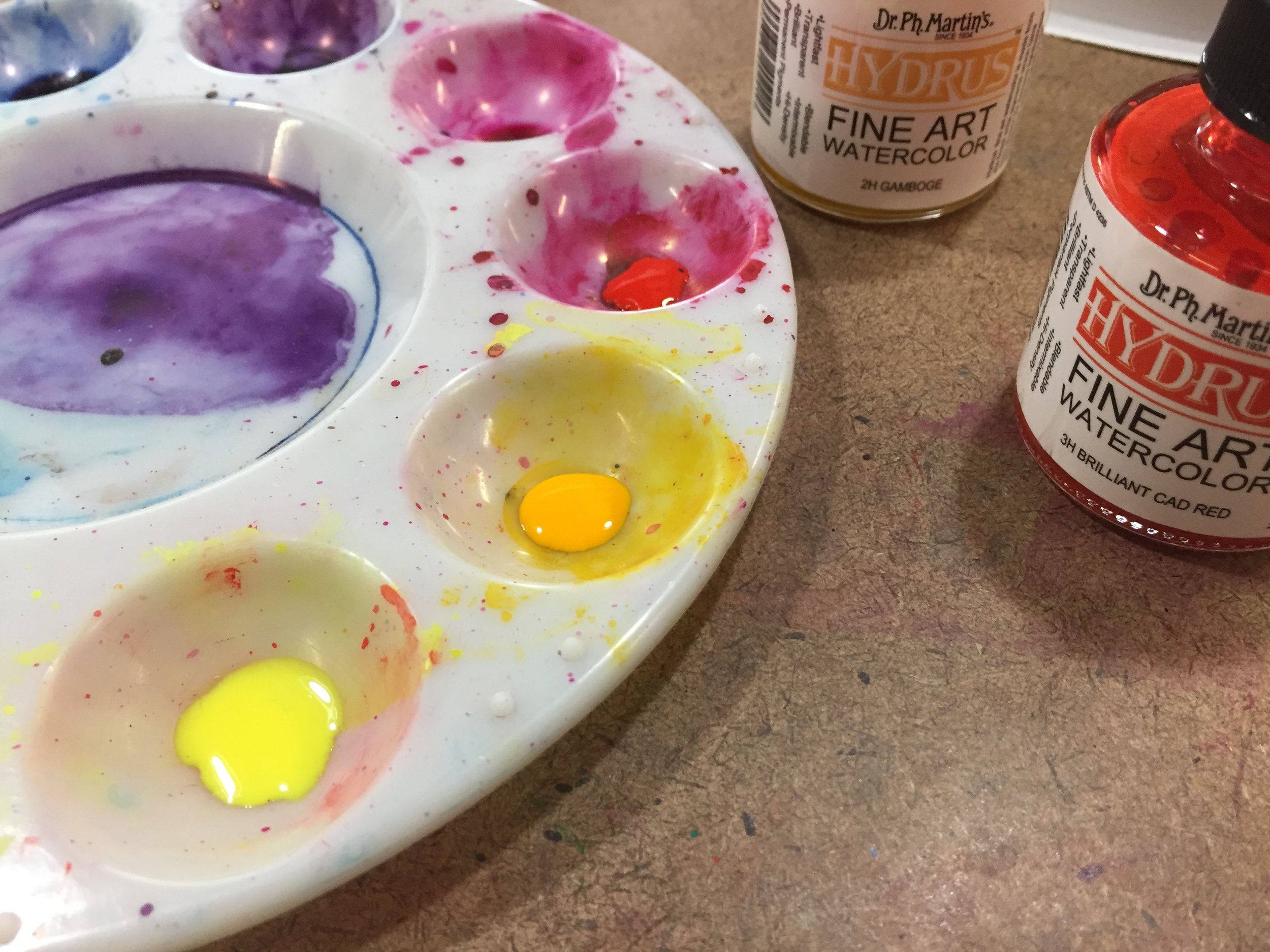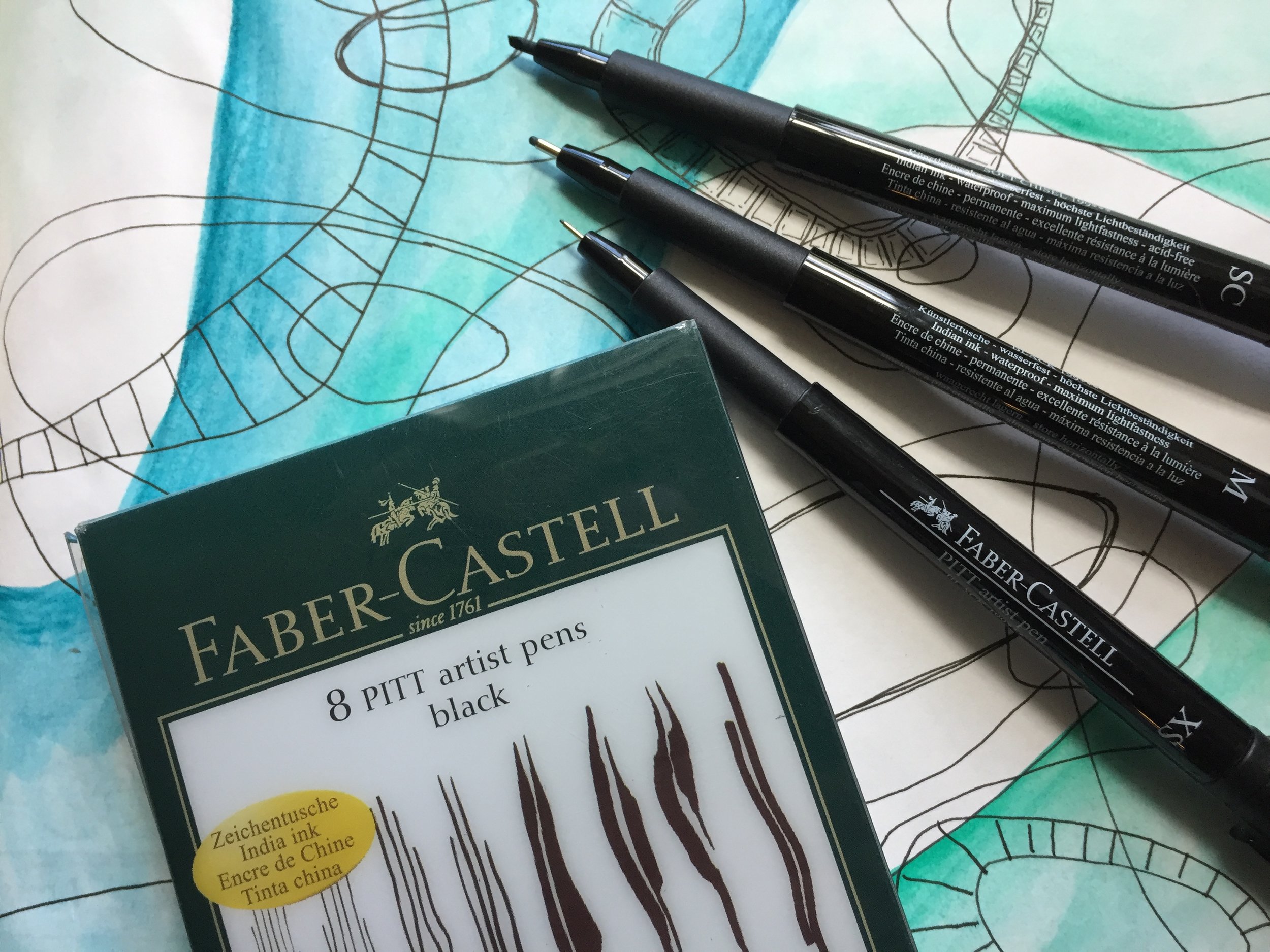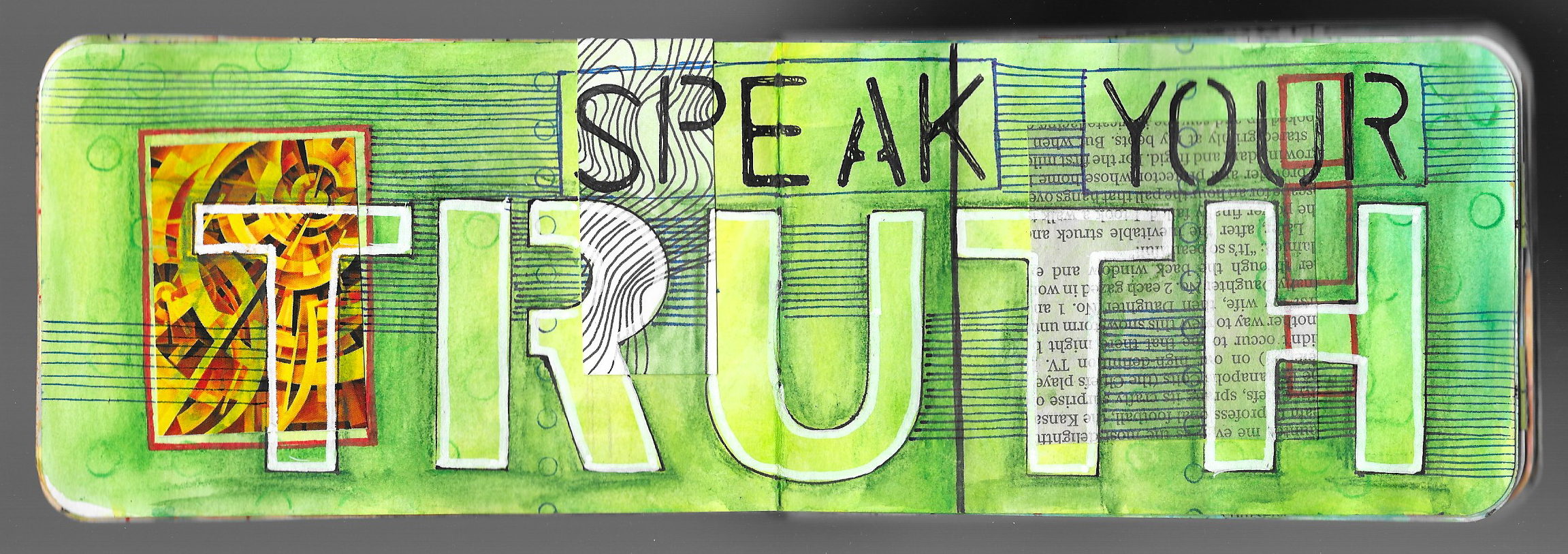I also like that the Pitt pens and airplane safe, and don’t have issues on flights. Many pens, the uni-ball Visions included, can have issues with leaks and globs because of the change in cabin pressure when flying. It’s such an annoyance to end up with blobs of ink all over a surface or all over your hands. There’s none of that with the Pitt Pens, and they have quickly become one of my favorite travel pens.
The only issue that I have is that most of the colors have a very limited nib size, and mostly come in a brush tip only. I’d love to have the colored ink in a wider selection of nibs, and it’s one of the main reasons that I haven’t really tried the colored ink. I’d even consider replacing my uni-ball Vision pens if I could get the colors I wanted in a Fine or Medium point. Maybe one day. Until then, the black Pitt pens are a great addition to my artistic arsenal, and I use them more and more as time goes by.
If you’re looking for a great set of black drawing pens that are waterproof and come in a wide variety of nibs, then I’d say to get yourself some Faber-Castell Pitt pens, and if you’ve used the colored pens, I’d love to know how you like them.
As always, I get no compensation for these recommendations, and I simple share the materials and the brands that I like and personally use.



















